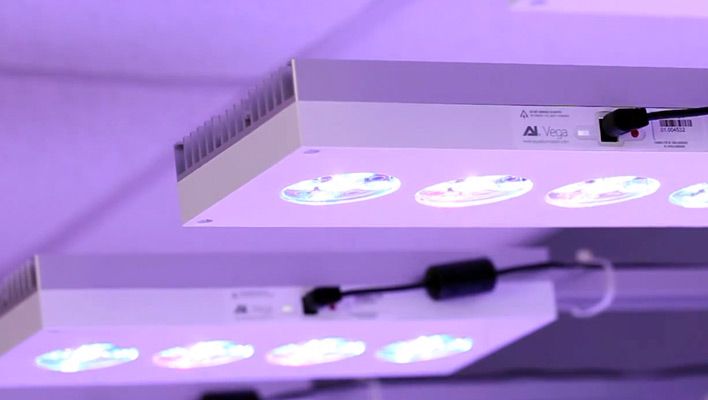LED lighting is a hotly debated topic in reef aquarium circles. It is a relative newcomer to the industry though no longer a complete unknown as was the perception in years past. Thousands of aquarists have used them for extended periods of time since their introduction 10 years ago. Despite their widespread adoption, opinions still differ on their effectiveness. Some swear by them while others were less enthused and decided to switch to another lighting technology, such as fluorescent bulbs or metal halide lamps.
The Benefits of LED Aquarium Lighting
1. Energy efficiency
One major benefit of LED lighting revolves around the energy efficiency of the units. A typical LED fixture that has 100W of LEDs is an incredibly bright light. In fact, it can penetrate down to the bottom of deep aquariums and scorch corals that have not been adjusted to their intensity. Watt per Watt, LEDs provide more light output than either T5 fluorescents or metal halides, which adds up to significant savings in electricity to both power the lights and to cool the tanks.
2. Replacement savings
There are also savings to be realized when one considers bulb replacements. LEDs are rated at 50,000 hours of life. What that means is, it will take 50,000 hours of continuous use for the LED to lose 50% of its intensity. Compared to T5s, which lose 50% of their intensity in a matter of months, LEDs practically never have to be changed.
The problem with the replacement logic, however, is that the electronics of LED systems are not all created equal. The performance of the LEDs depends a great deal on the electronics used, the quality of the assembly, and the design used to dissipate heat. Some of the lower-quality units can have issues related to electrical failures that undermine the expected longevity of the LEDs.
3. Programmability
The third benefit to LEDs is that they can be dimmed individually and there are more and more colors available to choose from. This allows for a high degree of customization when it comes to color balance and the complexity of the light-cycle programs. Some of the higher-end fixtures offer very advanced weather effects and moon-phase simulations. The level of control offered by LEDs is unmatched.




I *LOVE* LED fixtures. Great for corals, though not all models are created equal. I recommend Orphek. They have done quite a bit of research and have optimized their design with the necessary spectral ranges in mind.
Another fallback I realized was overusing the programming capabilities of LED units… Your reef will not respond the best by adjusting all of those settings we can now play with on a weekly basis! Perhaps this could be equated to Daylight Savings time to us humans? Took some willpower to realize that the corals will adjust and respond with time. Another one of those patience lessons.
Just dial in your desired light program and keep it there. Think of the obvious success of MH and other fixtures… Were these programmable like LED’s? Tanks appreciate consistent water parameters. Why not extend this thinking to our lighting setup (or the very least mimic the sun)?
What about how LEDs effect on corals? do they have the right light spectrum?
Hi Tom, thanks for stopping by and commenting!
You’ll find opinions vary on how well LEDs can grow corals. It seems to be a love/hate situation. In recent years the technology has come leaps and bounds. Current premium offerings absolutely offer proper spectrums and output to support and grow corals.
As with anything else, you must be wary of the cheap options as they often can’t support coral life.